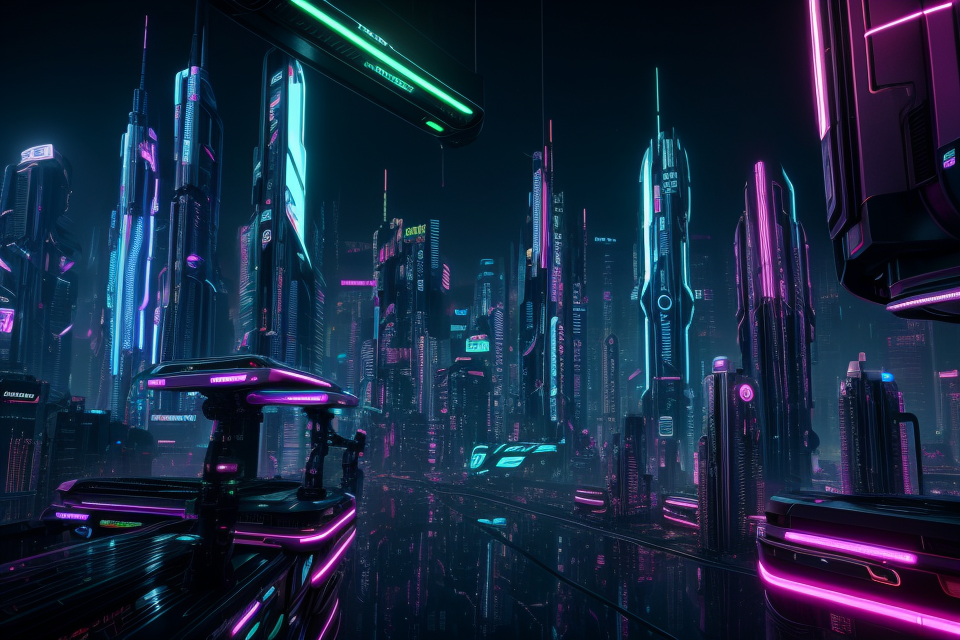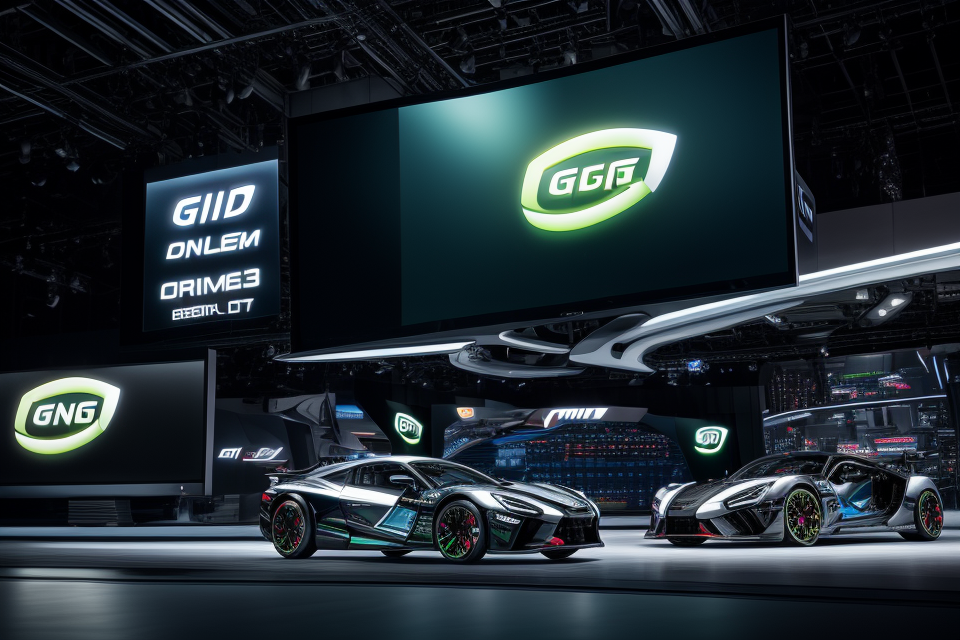
Staying ahead of the game is essential in the world of technology, especially when it comes to graphics cards. With the constant release of new and improved models, it can be challenging to keep up with the latest and greatest. But for those who are passionate about gaming and graphic design, staying updated on the latest graphics card releases is a must. So, when did the newest graphics card come out? Keep reading to find out.
The latest graphics card is the NVIDIA GeForce RTX 3080, which was released in September 2020. It is a high-end graphics card that offers advanced features such as real-time ray tracing and support for 8K resolution. The RTX 3080 is a powerful card that is well-suited for gaming, content creation, and other demanding applications. If you are looking to upgrade your graphics card, the RTX 3080 is currently one of the most advanced options available.
Understanding Graphics Card Technology
Evolution of Graphics Card Technology
Graphics card technology has come a long way since the first graphics processing units (GPUs) were introduced in the 1980s. The evolution of graphics card technology has been driven by a need for faster, more powerful graphics processing capabilities, particularly in the gaming industry. Here’s a look at some of the key advancements and innovations that have shaped the evolution of graphics card technology.
From integrated to dedicated graphics
Early computers relied on integrated graphics, which were built into the CPU and shared system memory. While these early graphics solutions were adequate for basic applications, they lacked the performance needed for gaming and other demanding graphics applications. As a result, dedicated graphics cards were developed, which featured their own memory and processing power specifically designed for graphics processing.
Key advancements and innovations
One of the key advancements in graphics card technology was the introduction of 3D acceleration hardware, which allowed for more realistic and immersive 3D graphics. This was followed by the development of shader models, which enabled more complex graphics effects and lighting, and the introduction of multi-core GPUs, which increased processing power and enabled more demanding graphics applications.
In recent years, advancements in machine learning and artificial intelligence have driven the development of new graphics technologies, such as deep learning super sampling (DLSS) and real-time ray tracing, which enable more realistic and immersive graphics in games and other applications.
The impact on gaming and other applications
The evolution of graphics card technology has had a significant impact on the gaming industry, enabling more realistic and immersive graphics, as well as faster frame rates and smoother gameplay. In addition to gaming, graphics cards are also used in a wide range of other applications, including video editing, 3D modeling, and scientific simulations, where their powerful graphics processing capabilities are essential for achieving high levels of performance.
Overall, the evolution of graphics card technology has been driven by a need for faster, more powerful graphics processing capabilities, and has had a significant impact on the gaming industry and other applications that rely on high-performance graphics processing.
Key Features and Specifications
When it comes to graphics cards, there are several key features and specifications that you should consider before making a purchase. These features include:
- CUDA cores: CUDA (Compute Unified Device Architecture) cores are the processing units of a graphics card. They are responsible for performing complex calculations and rendering images on the screen. The more CUDA cores a graphics card has, the faster it can process data.
- VRAM: VRAM (Video Random Access Memory) is the memory that is dedicated to storing and processing graphics data. It is essential for smooth and fast rendering of graphics, especially when playing games or running graphics-intensive applications.
- Memory bandwidth: Memory bandwidth refers to the speed at which the VRAM can access and process data. The higher the memory bandwidth, the faster the graphics card can access and process data.
- Thermal design power (TDP): TDP is the maximum amount of power that a graphics card can consume to keep its temperature within safe limits. It is an essential feature to consider as it affects the card’s cooling requirements and overall performance.
- PCIe version: PCIe (Peripheral Component Interconnect Express) is the interface that connects the graphics card to the motherboard. The latest PCIe version provides faster data transfer rates and improved performance.
By understanding these key features and specifications, you can make an informed decision when purchasing a graphics card that meets your needs and budget.
Identifying the Latest Graphics Card Release
Clues from the Manufacturers
- Press releases and announcements
Press releases and announcements from graphics card manufacturers are one of the most direct ways to stay informed about the latest releases. Companies like NVIDIA and AMD typically issue press releases to announce new product launches, which can provide valuable information about the specifications, features, and availability of the latest graphics cards. These announcements can be found on the manufacturer’s website or through a simple online search. - Website updates and product pages
Manufacturers often update their websites to reflect the latest graphics card releases. The product pages for graphics cards may be updated with new specifications, images, and pricing information. Visiting the manufacturer’s website regularly can help keep you informed about the latest graphics card releases. - Tech events and conferences
Tech events and conferences, such as CES and PAX, are also great places to find out about the latest graphics card releases. Companies often use these events to showcase their new products and technologies, and attendees can get a first-hand look at the latest graphics cards before they are available to the general public. These events can also provide valuable insights into the future of graphics card technology and the direction in which it is headed.
Online Research and Reviews
To stay ahead of the game in the world of graphics cards, it’s important to conduct thorough online research and reviews. Here are some effective methods for monitoring industry news and forums, examining benchmarks and performance tests, and reading user reviews and feedback.
Monitoring Industry News and Forums
Staying informed about the latest developments in the graphics card industry is crucial for tech enthusiasts and professionals alike. There are numerous websites and forums dedicated to the latest news and developments in the world of graphics cards. By monitoring these sources, you can stay up-to-date on the latest releases, updates, and rumors.
Some popular websites for graphics card news and reviews include Tom’s Hardware, TechRadar, and AnandTech. These sites provide in-depth analysis and testing of the latest graphics cards, as well as expert opinions and user reviews. Additionally, many graphics card manufacturers, such as NVIDIA and AMD, have their own websites and social media channels where they regularly post updates and news about their products.
Examining Benchmarks and Performance Tests
Benchmarks and performance tests are essential tools for evaluating the performance of graphics cards. These tests are designed to measure the speed, power, and efficiency of graphics cards in various scenarios, such as gaming, video editing, and rendering. By examining benchmarks and performance tests, you can get a sense of how a particular graphics card compares to others in its class.
There are many websites that provide benchmarks and performance tests for graphics cards, including 3DMark, Unigine Heaven and Superposition, and Geekbench. These tests can help you compare the performance of different graphics cards and identify which one is best suited for your needs.
Reading User Reviews and Feedback
User reviews and feedback can provide valuable insights into the performance and reliability of a particular graphics card. Other users’ experiences can help you identify potential issues or problems with a particular model, as well as highlight its strengths and weaknesses.
There are many websites that feature user reviews and feedback for graphics cards, including Amazon, Newegg, and Amazon. These sites often feature reviews from both professional reviewers and regular users, providing a balanced perspective on the strengths and weaknesses of a particular graphics card. Additionally, many graphics card manufacturers have their own forums and communities where users can share their experiences and provide feedback on their products.
Comparing the Latest Models
When it comes to identifying the latest graphics card release, it’s important to compare the latest models from both NVIDIA and AMD. Here’s a breakdown of what you need to know:
- NVIDIA GeForce vs. AMD Radeon: The two leading graphics card manufacturers are NVIDIA and AMD. Both companies release new models on a regular basis, each with their own unique features and specifications. It’s important to compare these models to determine which one is best suited for your needs.
- Comparison of features and specifications: When comparing the latest models from NVIDIA and AMD, it’s important to look at the features and specifications that each offers. Some of the key things to consider include:
- Performance: The performance of a graphics card is a key factor in determining its overall quality. Look for models that offer high levels of performance, particularly in areas such as gaming and video editing.
- Memory: The amount of memory a graphics card has can also be an important consideration. Look for models with at least 4GB of memory, and consider models with 8GB or more if you plan to use your graphics card for demanding tasks.
- Connectivity: Consider the types of connectivity options available on the graphics card, such as HDMI, DisplayPort, and DVI. These options can affect how you connect your graphics card to other devices.
- Power consumption: Power consumption is another important consideration, particularly if you’re building a gaming PC on a budget. Look for models that are energy efficient and won’t require a lot of power.
- Analyzing the target market and user base: When comparing the latest models from NVIDIA and AMD, it’s also important to consider the target market and user base for each. Some models are designed for gamers, while others are geared towards professionals in fields such as architecture, engineering, and video production. Consider the type of work you’ll be doing and the type of graphics card that will best meet your needs.
Deciding Whether to Upgrade
Factors to Consider
When deciding whether to upgrade to the newest graphics card, there are several factors to consider. Here are some of the most important ones:
Compatibility with existing components
Before upgrading to a new graphics card, it’s essential to ensure that it’s compatible with your existing components. You need to check whether your motherboard and power supply unit (PSU) can handle the new card’s power and size requirements. Additionally, you should verify that your case has enough space for the new card and that your operating system and drivers are up to date.
Budget and cost-benefit analysis
Upgrading to a new graphics card can be expensive, so it’s crucial to consider your budget and perform a cost-benefit analysis. You need to weigh the benefits of upgrading against the costs, including the price of the new card, any necessary additional components, and the potential impact on your system’s performance. It’s also essential to consider the long-term benefits of upgrading, such as increased resale value or the ability to run demanding games or applications.
Potential improvements in performance
The primary reason most people upgrade their graphics cards is to improve performance. By upgrading to a newer, more powerful card, you can enhance your system’s capabilities, enabling you to run games or applications at higher resolutions, with improved frame rates, and better graphics quality. You should research the performance gains you can expect from the new card compared to your current one, taking into account the specific games or applications you plan to use. Additionally, you should consider whether the new card will be compatible with the games or applications you want to run, as some may require specific features or drivers.
Tools for Assessing Upgrade Worthiness
GPU-Z
GPU-Z is a free utility tool that provides detailed information about the graphics card installed in your computer. It displays essential details such as the manufacturer, model, and memory specifications. This tool can help you determine if your current graphics card is capable of handling the latest games and applications. Additionally, GPU-Z can provide insights into the clock speeds and temperature of your graphics card, which can help you identify potential bottlenecks and areas for improvement.
3DMark
3DMark is a popular benchmarking tool designed to evaluate the performance of your graphics card. It provides a comprehensive suite of tests that can measure your graphics card’s performance in various scenarios, including gaming, graphics, and CPU tests. By running 3DMark, you can determine if your graphics card is capable of handling the latest games and applications, and whether an upgrade is necessary. Additionally, 3DMark can help you identify potential bottlenecks and areas for improvement in your system’s overall performance.
Unigine Heaven and Superposition
Unigine Heaven and Superposition are two more benchmarking tools that can help you assess the performance of your graphics card. Unigine Heaven is a synthetic benchmark that measures the graphics card’s performance in real-time rendering of complex 3D scenes. Superposition, on the other hand, is a more realistic benchmark that measures the graphics card’s performance in a game-like scenario. Both tools can help you determine if your graphics card is capable of handling the latest games and applications, and whether an upgrade is necessary. Additionally, they can provide insights into the graphics card’s performance under heavy load, which can help you identify potential bottlenecks and areas for improvement in your system’s overall performance.
Future Developments and Trends
Advancements on the Horizon
The graphics card industry is constantly evolving, with new technologies and innovations being developed all the time. Here are some of the most exciting advancements on the horizon:
- Ray tracing and real-time global illumination: Ray tracing is a technique used to simulate the behavior of light in a virtual environment, creating more realistic and accurate lighting effects. With the advent of real-time global illumination, ray tracing will become even more powerful, allowing for more complex and dynamic lighting in video games and other applications.
- Machine learning and AI integration: Machine learning and AI technologies are being integrated into graphics cards to improve performance and enable new features. For example, AI can be used to optimize game settings for optimal performance, or to automatically detect and fix common graphics errors.
- Increased focus on energy efficiency: As graphics cards become more powerful, they also become more power-hungry. To address this issue, manufacturers are focusing on developing more energy-efficient graphics cards that can deliver high performance without draining too much power. This includes using more efficient manufacturing processes, incorporating power-saving features into card designs, and developing new cooling technologies to reduce energy consumption.
Competition and Market Dynamics
The graphics card market is characterized by intense competition and constant technological advancements. Two major players, NVIDIA and AMD, have been driving the industry forward with their ongoing rivalry, pushing the boundaries of what is possible with each new release.
NVIDIA, a leading manufacturer of graphics processing units (GPUs), has a long history of innovation and is known for its cutting-edge technology. Its GeForce series, particularly the GTX and RTX lines, have consistently set the standard for high-performance graphics cards. In recent years, NVIDIA has made significant strides in the realm of AI and deep learning, integrating Tensor cores into its GPUs to enhance their capabilities in these areas.
AMD, on the other hand, offers a more diverse range of products, catering to different segments of the market. Its Radeon series, including the RX and PRO lines, provide stiff competition to NVIDIA’s offerings. AMD has also been making strides in AI and machine learning, incorporating hardware accelerators like the ROCm platform to complement its GPUs.
Emerging players and new technologies are also shaping the future of graphics cards. Companies like Intel, with its integrated GPU solutions, and NVIDIA’s rival, Ampere, are entering the market with innovative products that challenge the established players. The integration of ray tracing, a technology that simulates realistic lighting and shadows in games and other applications, is another area of significant development.
Predicting the next big thing in graphics cards is not an easy task, as it depends on various factors such as market demand, technological advancements, and industry trends. However, it is clear that the competition and market dynamics in the graphics card industry will continue to drive innovation and push the boundaries of what is possible. As new players enter the market and emerging technologies are adopted, graphics cards will continue to evolve, providing better performance, new features, and enhanced capabilities for users.
FAQs
1. When did the newest graphics card come out?
The exact release date of the newest graphics card may vary depending on the manufacturer and model. However, as of my knowledge cutoff in September 2021, the latest graphics cards from NVIDIA and AMD were released in late 2020 and early 2021, respectively. The NVIDIA GeForce RTX 3080 was released in September 2020, while the AMD Radeon RX 6800 XT was released in November 2020. It’s important to note that the graphics card market is constantly evolving, and new models may be released at any time.
2. How do I know if my graphics card is the newest one?
To determine if your graphics card is the newest one, you can check the release date and specifications of the card. Most graphics cards will have the release date printed on the box or listed on the manufacturer’s website. Additionally, you can compare the specifications of your card to the latest models available on the market. If your card has similar or better specifications than the latest models, then it is likely a newer card. However, keep in mind that the performance of a graphics card is not solely determined by its release date, as other factors such as driver updates and game optimization can also affect its performance.
3. How important is it to have the newest graphics card?
Having the newest graphics card can be important for gamers and users who require high-performance graphics, such as professionals in the fields of video editing, 3D modeling, and other graphics-intensive applications. The latest graphics cards typically offer improved performance, faster frame rates, and better graphics quality compared to older models. However, the extent to which these improvements are noticeable will depend on the specific application and the user’s hardware setup. Additionally, the latest graphics cards often come with a higher price tag, so it’s important to consider your budget and whether the benefits of a newer card are worth the cost.


